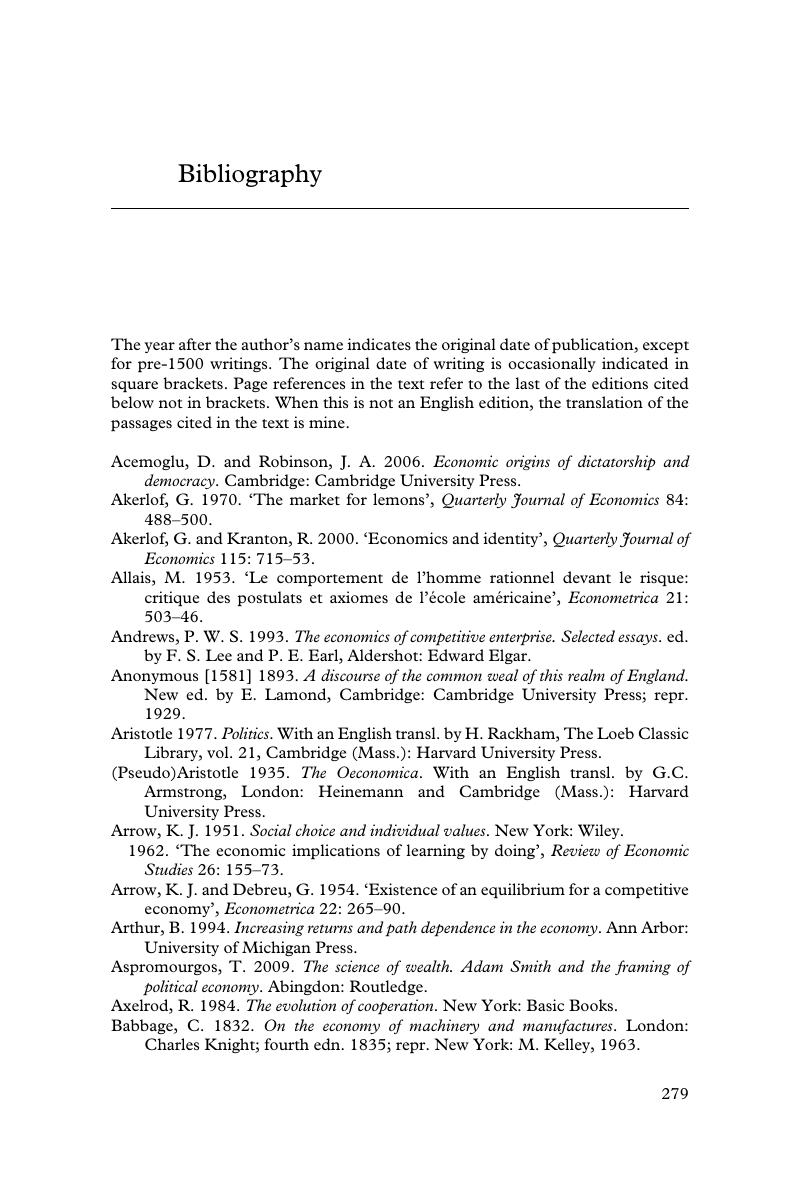Book contents
- A Brief History of Economic Thought
- A Brief History of Economic Thought
- Copyright page
- Contents
- Preface
- 1 Introduction: The History of Economic Thought and Its Role
- 2 The Prehistory of Political Economy
- 3 William Petty and the Origins of Political Economy
- 4 From Body Politic to Economic Tables
- 5 Adam Smith
- 6 Economic Science at the Time of the French Revolution
- 7 David Ricardo
- 8 The Ricardians and the Decline of Ricardianism
- 9 Karl Marx
- 10 The Marginalist Revolution: The Subjective Theory of Value
- 11 The Austrian School and Its Neighbourhood
- 12 General Economic Equilibrium
- 13 Alfred Marshall
- 14 John Maynard Keynes
- 15 Joseph Schumpeter
- 16 Piero Sraffa
- 17 The Age of Disgregation
- A Guide to the Literature
- Bibliography
- Author Index
- Subject Index
- References
Bibliography
Published online by Cambridge University Press: 12 September 2017
- A Brief History of Economic Thought
- A Brief History of Economic Thought
- Copyright page
- Contents
- Preface
- 1 Introduction: The History of Economic Thought and Its Role
- 2 The Prehistory of Political Economy
- 3 William Petty and the Origins of Political Economy
- 4 From Body Politic to Economic Tables
- 5 Adam Smith
- 6 Economic Science at the Time of the French Revolution
- 7 David Ricardo
- 8 The Ricardians and the Decline of Ricardianism
- 9 Karl Marx
- 10 The Marginalist Revolution: The Subjective Theory of Value
- 11 The Austrian School and Its Neighbourhood
- 12 General Economic Equilibrium
- 13 Alfred Marshall
- 14 John Maynard Keynes
- 15 Joseph Schumpeter
- 16 Piero Sraffa
- 17 The Age of Disgregation
- A Guide to the Literature
- Bibliography
- Author Index
- Subject Index
- References
Summary

- Type
- Chapter
- Information
- A Brief History of Economic Thought , pp. 279 - 300Publisher: Cambridge University PressPrint publication year: 2017



